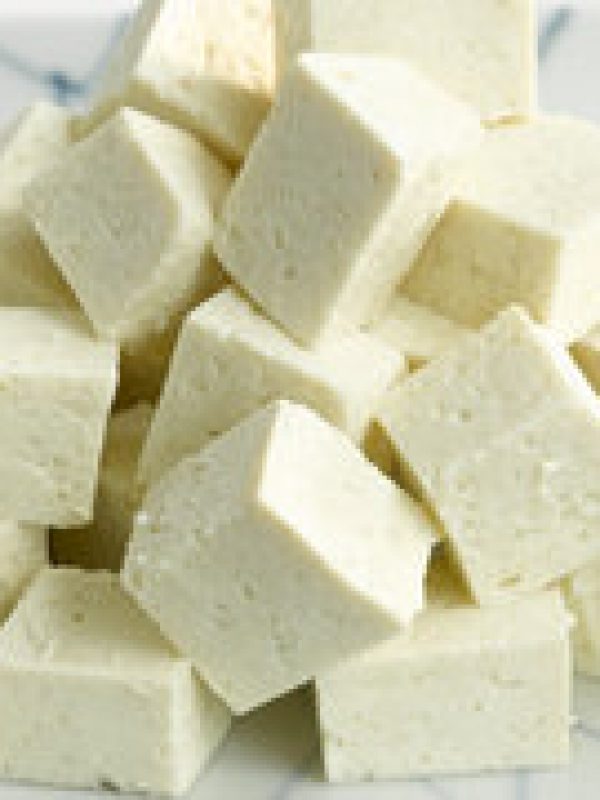The One Thing You Need to Make Excellent Tofu
Tofu doesn’t suck. You just suck at cooking it.
But there’s one thing—just one thing!—you can do to make your tofu not only edible, but pretty darn delicious. It requires something I’m 99.9 percent sure you already have in your kitchen: paper towels. That’s right, paper towels (or napkins or even a clean and not fuzzy dish towel) are the difference between crispy tender bits and flavorless rubbery planks. A few things to keep in mind.
Be Firm
That is, choose extra firm tofu for frying, searing, roasting, etc. If you want to make a smoothie or a decadent vegan chocolate cream pie, choose silken—it blends up smooth and silky. Get it? You can also dollop silken tofu onto spicy soups or on top of soba noodles for added protein, but, I admit, it’s an acquired taste, er, texture.
You’ll find soft, medium, firm, and extra-firm blocks of tofu. I’ve used soft in soups, but it’s best to avoid using it in recipes that need a lot of stirring or tossing, as it will likely fall apart. To be honest, I’m not totally sure what the benefits of medium-firm tofu are, and I don’t usually see it in the supermarket.
I’ve used firm and extra-firm blocks interchangeably, although extra-firm definitely has more texture, which I prefer.
Meet the Press
You’ll notice that blocks of tofu almost always come in a bit of water. Get rid of it. Make a slit in the top of the packaging and drain off the water. Then slice the tofu into slices, whatever thickness you like, but no thicker than 3/4-inch. Lay the planks on a few layers of paper towels, top with another few layers of paper towels and cover with something heavy. I usually like to use a 13-by-9-inch baking dish or a cast-iron skillet. Either way, I add a few heavy cans to the dish or skillet in an organized arrangement to apply even pressure.
Now, walk away. You heard me. Get busy doing something else. Here are a few ideas: boil some rice, chop some greens, pick some pomegranate seeds, make your salad dressing for the week. While you prep your other ingredients, the paper towels will absorb excess moisture from the tofu. What does moisture do? Causes things to steam and prevents crispiness. No bueno. Leave the tofu under pressure as long as you can stand it (but 15 minutes should do it).
Cook Smart
From here, you can dice up the planks and fry or roast them as-is. Here’s my go-to roasted tofu: Preheat the oven to 400°F. Toss the tofu in a mixture of 2 tablespoons soy sauce, 2 tablespoons balsamic vinegar, 1 tablespoon honey, and 1 tablespoon olive oil. Toss, toss, toss, and arrange in a single layer on a rimmed baking sheet. Roast, shaking the sheet a couple times during roasting, until golden and a touch firmer (go on, use your fingers and see how it feels). Toss in salads, rice bowls, or just eat as a snack.
If you want to pan-fry or sauté, you’ve got a couple of options. You can certainly just heat up some olive oil in a skillet, preferably nonstick, season the tofu with salt and pepper and get going, just like you would good chicken or other pieces of protein. That means into the hot skillet, and NO TOUCHING until you see some color, then toss or turn.
(A Crispy Secret)
This works, I promise. Now, for EXTRA crispy tofu, you can dust the planks in a very thin layer of cornstarch before frying. The coating will absorb any residual moisture and create a golden crust. Not necessary, but a good trick to have in your back pocket.
Be Mindful
A note on incorporating tofu into recipes: unless you add flavor to it, tofu doesn’t have a ton of flavor of its own. Marinating can help, which you can do after you’ve pressed it between the paper towels. But the big thing to consider is what you’re pairing it with. Make a flavorful dressing, or pair it with punchy assertive flavors of other kinds (think: sesame oil, tamari, fresh chilies). The same goes for texture. I like the texture of tofu because it reminds me of fresh mozzarella, but I know it’s not for everybody. If you want to incorporate it into a dish, don’t make it do all the work by itself. Use contrasting textures—crispy, crunchy, chewy—to help support and highlight its natural tenderness.



